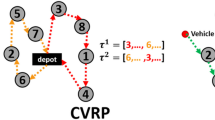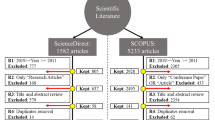Abstract
The problem of finding an AND/OR precedence-constraint assembly schedule using optimization neural computation is presented. The precedence relationships of assembly operation result from the geometric constraints of subtasks. Because of the existence of geometric constraints among assembly subtasks, the assembly operation involves AND/OR precedence relationships; that is, the order of assembly crucially determines whether the desired task can be achieved. A feasible assembly schedule is a schedule that satisfies these AND/OR precedence constraints.
It has been shown that all the feasible assembly schedules can be generated by transforming geometric constraints of subtasks to the pattern-matching operation. Using the question-answer pattern and pattern-matching operation, the assembly scheduling problem can be transformed into an AND/OR precedence-constrained traveling salesman problem (TSP). Two precedence-constrained TSPs, cost-constrained TSP (CCTSP) and state-constrained TSP (SCTSP), are discussed. The CCTSP artificially sets the cost of the prohibited moves to a very large value which ensures that the constraints are satisfied, while the SCTSP restricts the movement of next assembly subtasks. The advantage of the SCTSP over CCTSP in the generation of the assembly schedule will be illustrated.
A novel method proposed here is to obtain the best AND/OR precedence-constraint assembly schedule using neural network computation. The geometric constraints of an assembled object are transformed into the elements of the connection matrix which specifies the connection strength among neurons. A modified Hopfield network is used to tackle the AND/OR precedence-constraints assembly scheduling problem. Multirobot assembly sequences generation is also discussed. The designed algorithm can accommodate various constraints and applications. Detailed algorithms, examples and experiments are presented.
Similar content being viewed by others
References
Aiyer, S. V. B., Niranjan, M. and Fallside, F. (1990) A theoretical investigation into the performance of the Hopfield model.IEEE Transactions on Neural Networks,1 (2), 204–215.
Bellmore, M. and Hong, S. (1974) Transformation of multisalesmen problem to the standard traveling salesman problem.Journal of ACM,21 (3), 500–504.
Chang, K. H. and Wee, W. G. (1988) A knowledge-based planning system for mechanical assembly using robots.IEEE Expert Magazine, 18–30.
Chen, C. L. P. (1990) Neural computation for planning AND/OR precedence-constraint robot assembly sequences, inProceedings of International Joint Conference on Neural Networks,I, pp. 127–142.
Chen, C. L. P. (1991) Automatic generation assembly sequences by pattern-matching,IEEE Transactions on Systems, Man and Cybernetics,SMC-21 (2) pp. 376–389.
De Fazio, T. L. and Whitney, D. E. (1987) Simplified generation of all mechanical assembly sequences.IEEE Journal of Robotics and Automation,RA-3 (6), 640–658.
Fox, B. R. and Kemp, K. G. (1987) Reasoning about opportunistic schedules, inProceedings of 1987 IEEE International Conference of Robotics and Automation, pp. 1876–1882.
Homem de Mello, L. S. and Sanderson, A. C. (1986) AND/OR graph representation of assembly plans, inProceedings of AAAI Conference, pp. 1113–1119.
Hopfield, J. J. (1982) Neural networks and physical systems with emergent collective computational abilities.Proceedings of the National Academy of Science,79, 2554–2558.
Hopfield, J. J. and Tank, D. W. (1985) Neural computation of decisions in optimization problems.Biological Cybernetics,52, 141–152.
Kahng, A. (1989) Traveling salesman heuristics and embedding dimension in the Hopfield model, inProceedings of 1989 International Joint Conference on Neural Networks,I, pp. 513–520.
Tagliarini, G. A. and Page, E. W. (1987) Solving constraint satisfaction problems with neural networks, inProceedings of 1987 International Conference on Neural Networks,III, pp. 741–747.
Takeda, M. and Goodman, J. W. (1986) Neural network for computation: number representation and programming complexity.Applied Optics,25 (18), 3033–3046.
Van den Bout, D. E. and Miller, T. K. (1988) A traveling salesman objective function that works, inProceedings of 1988 International Conference on Neural Networks,III, pp. 299–303.
Wacholder, E., Han, J. and Mann, R. C. (1989) A neural network algorithm for the multiple traveling salesmen problem.Biological Cybernetics,61 (1), 11–19.
Wilson, G. V. and Pawley, G. S. (1988) On the stability of the traveling salesman problem algorithm of Hopfield and Tank,Biological Cybernetics,58, 63–70.
Author information
Authors and Affiliations
Rights and permissions
About this article
Cite this article
Philip Chen, C.L. Design of a real-time AND/OR assembly scheduler on an optimization neural network. J Intell Manuf 3, 251–261 (1992). https://doi.org/10.1007/BF01473902
Received:
Accepted:
Issue Date:
DOI: https://doi.org/10.1007/BF01473902




